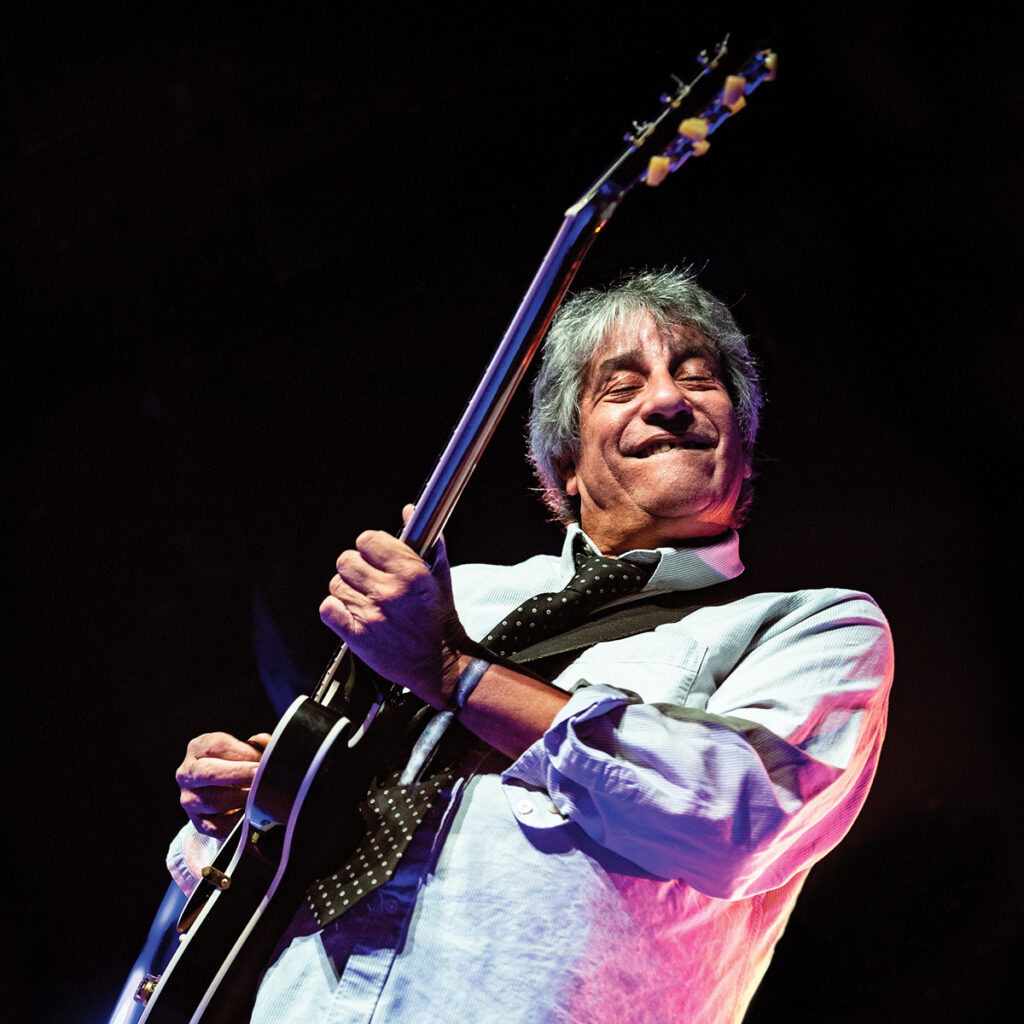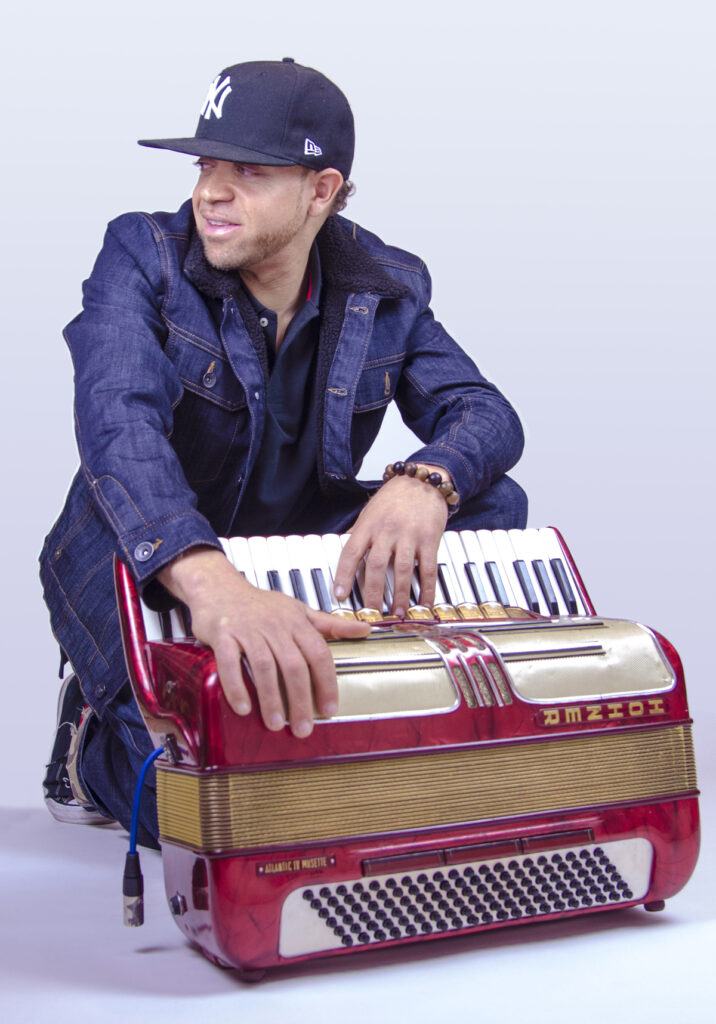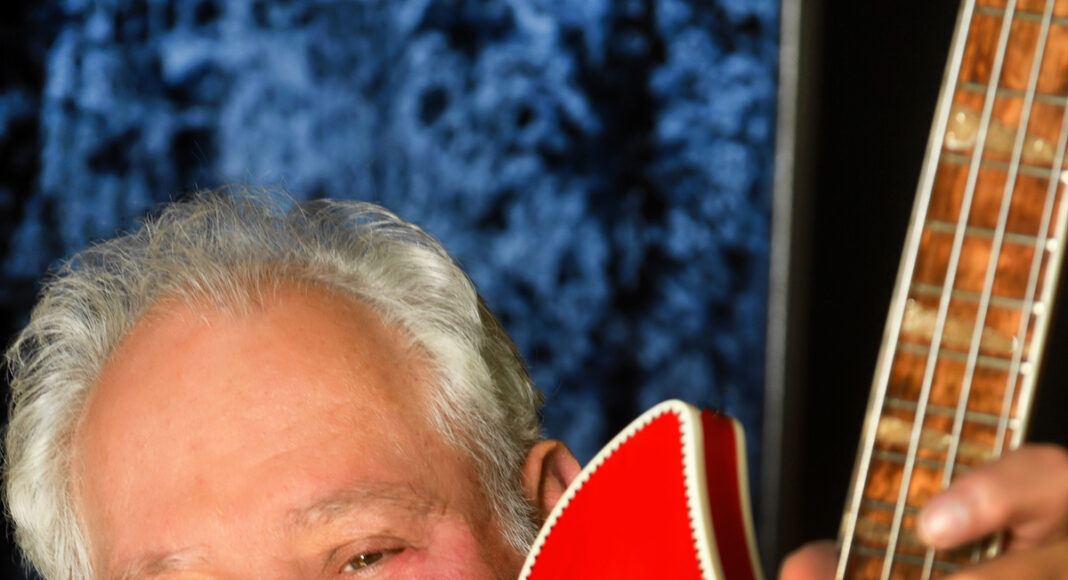The San Jose area has a serendipitous but unlikely relationship with the blues, the musical genre rooted in the Deep South’s cotton fields and rice and sugar plantations that birthed the last half century’s dominant popular music, rock & roll.
While the bluesy field hollers that migrated stateside with slaves from West Africa were probably not echoing through the valley’s apricot and prune orchards, its post-agricultural suburban landscape somehow embraced and nurtured a soulful subculture. “Mississippi moon, won’t you keep on shinin’ on me?” after all, are lyrics inscribed by a San Jose songwriter.
During the 1980s, this comfortable sprawling enclave with a 3% African American population (the US average is four times that), the South Bay improbably became a blues hotbed. It somehow produced the kind of live product one would expect in Chicago, Memphis, Detroit or St. Louis.
In 1981 the Fountain Blues Festival began at San Jose State, the brainchild of Associated Students Program Board exec and Los Gatos resident Ted Gehrke. He brought heavyweights like Bo Diddley, Buddy Guy, John Mayall, Etta James, Clarence “Gatemouth” Brown, Robert Cray and Charlie Musselwhite to the annual festivals. For 16 years it was known as the Metro Fountain Blues Festival when this newspaper contributed cash and advertising to keep it going.
In 1983, a tiny dive bar, wedged next to Stevens Creek Surplus on the boulevard’s auto row, opened its doors. Operated by siblings Max and June Stanley, JJ’s Blues became a regular stop on the national blues touring circuit.
Mississippi legend John Lee Hooker, an influence on Eric Clapton, Bob Dylan, Jimi Hendrix, the Stones and ZZ Top—who’d moved to Gilroy and later lived on the peninsula—was a regular at JJ’s.
During its heyday from the late ’80s to the mid ’90s, there was a second JJ’s location in Mountain View and then a third in downtown San Jose in the mid to late ’90s that hosted such icons as Gregg Allman and the Doors’ Robby Krieger for intimate club performances.
Metro music writer and jazz drummer Sammy Cohen took note of the scene in 1985 and pitched a story that was cover headlined “The Blues: From the Mississippi Delta to Stevens Creek.”
I amble swiftly past the doorperson and slip my way through the mass of blues fanatics to the back of the narrow venue where the requisite pool table and broken cigarette machine by the john door are located. Sidling up to the bar, I purchase a pack of Camels and a beer from a 50ish gent. …Working past bodies and barstools up toward the stage, I endeavor to catch a glimpse of [Andy] Just’s band as they set up. A lanky blond kid bounces on stage with a guitar case. He seems too young to shave.
Bluesman John Garcia lived in Gilroy, where he performed at the Gilroy Garlic Festival and The Milias when he wasn’t touring with Johnny Winter, Paul Simon or Bonnie Raitt. A local blues scene anchored by Gary Smith, Andy Just, Chris Cain and prodigies Little John Chrisley and the aforementioned “lanky blond kid” John Wedemeyer—who last week was named lead singer and guitarist for Mike Love’s Beach Boys—provided a solid, steady diet of blues jams any night of the week.


JJ’s sold in 2004 and continued as a blues bar, though changing its musical format after a second sale in 2014. The blues festival meanwhile relocated from the San Jose State campus to a downtown park in search of broader community support, adding craft beer to its amenities.
In 2019, Ted Gehrke died at age 69, and the following year the pandemic hit and the festival went dark for two seasons, returning to Plaza de Cesar Chavez last year.
An organization’s transition from a longtime visionary leader always presents some pitfalls. The good news is that the festival survived its founder’s loss and has remained on a solid financial and musical footing under the leadership of Bob Gonzalez and the volunteer board of the San Jose Fountain Blues Foundation.
Gonzalez, the grandson of a Spanish-speaking Texan who arrived at the time of the Mexican revolution, grew up in San Jose’s Cambrian neighborhood near Leigh and Hillsdale. He says his family didn’t have much money but encouraged extracurricular activities that included violin lessons and later horns with his junior high classmate Don Baskin.
The two formed a pairing ready-made to be recruited into rock & roll history. “We were the saxophone section of the Cambrian Middle School marching band. And one day I was walking home from school and I was lugging my sax. This kid yells across the street and says, ‘Hey, kid, can you play that thing?’ Literally, like it was out of a movie.
“Then the British Invasion came. I went out and bought myself a bass guitar to teach myself how to play bass because there were no bass players around. And in the summer of ’64 I graduated from high school. We started the Syndicate of Sound. Two years later, we had a hit record.”
The breakthrough 1966 Top Ten single “Little Girl” was an early and quintessential garage rock classic, emblematic of the Beatles-inspired low-tech, fuzzy electric sound emanating from suburban garages, the precursor of psychedelic rock, punk rock and grunge. “We played with the Yardbirds when Jimmy Page was the guitar player and they became Led Zeppelin.”
As the cowriter of “Little Girl,” his good fortune at age 18 would provide him with a comfortable life and retirement. After Syndicate of Sound disbanded, Gonzalez worked as a merchandiser at the Breuners furniture company on Hamilton Avenue. “I went for a long time with anonymity because the first thing people think when they hear you had a hit record is ‘Why aren’t you living in a mansion in the hills.’”
After retiring from retail, Gonzalez returned to music, performing both with his own eponymous band and the Syndicate of Sound, and volunteered on the board of the Silicon Valley Blues Society. Later he joined the Fountain Blues Foundation and has been its president for the past six years.
Gonzalez fit naturally into the nonprofit management role. “I was the guy in the band that carried the money. I was the guy who kept track of how much and from whom we would take money and pay the bills while we’re on the road. I would make sure that we ended up the tour with more money than we started.”
It’s one thing when the randomness of life drops enough human actors in one place, like a planetary alignment, to create a temporary phenomenon, a flash in the pan. It’s yet another when a scene has institutional staying power.
With Gonzalez’ steady hand, the support of San Jose Rock ’N’ Roll Hall of Fame founder Dan Orloff, and the Poor House Bistro continuing to present blues artists on an ongoing basis, the local scene that once revolved around the Stanleys, Hooker and Gehrke lives on.
This coming weekend, with two stages amidst an array of vendors, food and on-display automobiles, the second generation of Southern Rock DNA will electrify Northern California’s original public plaza. It’s the 40th time the event has occurred, no small feat in an area that has changed as much as Silicon Valley in the past four decades.


40th San Jose Fountain Blues & Blues Festival
The festival takes place 11am-8pm on Sat, June 17 at Plaza de Cesar Chavez, 1 Paseo de San Antonio, San Jose. General admission is $25; VIP is $85. Tickets: fountainblues.vbotickets.com/event.
Main Stage Schedule
Andre Thierry Accordion Soul Music—noon
Diunna Greenleaf—2pm
Chris Cain Band—4:15pm
Devon Allman Project featuring Larry McCray and Jimmy Hall—6:30pm
In addition, the Poor House Bistro Stage will feature popular Bay Area blues artists between main-stage acts.For more details, visit fountainblues.com.



